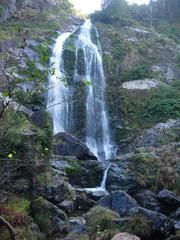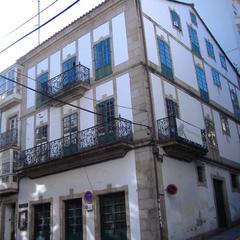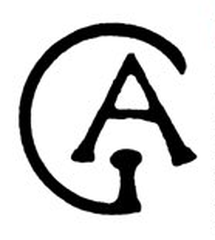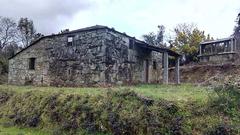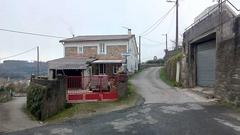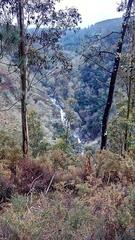Ferrol Cathedral: Visiting Hours, Tickets, and Guide to Ferrol Historical Sites
Date: 15/06/2025
Introduction
Ferrol Cathedral, officially known as the Co-Cathedral of Saint Julian (Concatedral de San Julián), is a cornerstone of Ferrol’s spiritual, architectural, and maritime legacy in Galicia, Spain. Built in the 18th century, the cathedral is an iconic example of Neoclassical architecture and is closely tied to Ferrol’s rise as a major Spanish naval base. As both a place of worship and the traditional starting point of the Camino Inglés pilgrimage to Santiago de Compostela, it offers visitors a unique blend of religious, cultural, and historical experiences. This detailed guide covers everything you need to know about visiting Ferrol Cathedral—its hours, ticketing, accessibility, architectural highlights, and the surrounding historical sites that make Ferrol a must-visit destination in northwestern Spain (Ferrol Official Tourism, Diocese of Mondoñedo-Ferrol, Galicia Tourism Board).
Historical Background and Significance
Origins and Construction
Ferrol Cathedral was constructed between 1763 and 1772, a period marked by Ferrol’s transformation into a vital naval hub for the Spanish crown. Designed by Julián Sánchez Bort and inspired by Rome’s Sant’Andrea delle Fratte, the cathedral showcases the Neoclassical style prevalent in Enlightenment-era Europe. Initially built to serve a rapidly growing population, it became Ferrol’s spiritual and civic center (Ferrol Official Tourism, Galicia Tourism Board).
Co-Cathedral Status
In 1959, the church was granted co-cathedral status, sharing episcopal functions with the Cathedral of Mondoñedo. This designation underlined Ferrol’s ecclesiastical significance and reinforced its role within the Diocese of Mondoñedo-Ferrol (Diocese of Mondoñedo-Ferrol).
Pilgrimage and Cultural Importance
Ferrol Cathedral is the traditional starting point of the Camino Inglés, welcoming pilgrims from the British Isles and northern Europe since the 12th century. The cathedral also plays a central role in local religious festivals, most notably the Feast of Saint Julian (January 7) and Semana Santa (Holy Week), which is recognized as a festival of International Tourist Interest.
Architectural Highlights
Exterior and Neoclassical Design
The cathedral’s façade is a textbook example of Neoclassical symmetry and restraint, with balanced proportions, classical pilasters, and twin towers capped with cupolas. The use of local granite ensures durability and harmonizes with the maritime climate (Architecture Lab).
Interior Layout and Artistic Elements
Inside, the Latin cross plan features a luminous nave, high vaulted ceilings, and side chapels adorned with religious art and stained glass windows. The main altar is dedicated to Saint Julian, and the sober artistic style fosters a serene, contemplative atmosphere. Noteworthy features include a historic pipe organ and Mannerist details in the chapels.
Visiting Ferrol Cathedral
Location and Accessibility
Ferrol Cathedral is centrally situated in Plaza de Armas, within the historic Magdalena Quarter. The area is pedestrian-friendly, with easy access from local bus stops and the main train station (about a 15-minute walk). The cathedral is wheelchair accessible, with ramps at the main entrance and level flooring.
Visiting Hours
- Monday to Saturday: 10:00 AM – 1:00 PM and 5:00 PM – 8:00 PM
- Sunday and Religious Holidays: Open for Mass, with limited visiting outside service times
Visiting hours may change during major festivals or special liturgical events. Always consult the official website or local tourism office before your visit (Tourist Places Guide).
Tickets and Admission
General admission is free; donations are encouraged to support preservation and community programs. Guided tours, which provide in-depth historical and artistic context, may require a nominal fee.
Guided Tours
Guided tours are available through local tourism agencies and private guides. These tours can be booked in advance and are offered in multiple languages. Panels inside the cathedral provide interpretive information in Spanish and Galician (PowerTraveller).
Amenities and Visitor Services
- Accessibility: Ramps, accessible restrooms, and flat interior pathways
- Restrooms: Public facilities are nearby in Plaza de Armas or local cafés
- Souvenirs: Occasional kiosks offer religious items near the entrance
Dress Code and Etiquette
Modest attire (shoulders and knees covered) is required. Silence is appreciated, especially during services. Photography is allowed without flash or tripods, except during Mass or special ceremonies.
Key Religious Services and Events
- Feast of Saint Julian (January 7): Major city celebration with processions and special Masses.
- Holy Week (Semana Santa): Renowned for elaborate processions and cultural events (Best Time To).
- Christmas and Easter: Special liturgies and musical events.
Pilgrims starting the Camino Inglés can obtain their first credential stamp (sello) at the cathedral.
Exploring Ferrol: Nearby Historical Sites
Magdalena Quarter
The cathedral is a gateway to the Magdalena Quarter, an 18th-century grid-designed neighborhood with elegant glassed-in balconies, lively squares, and modernist buildings (winalist.com).
Naval Museum and Arsenal
A short walk away, the Naval Museum and Arsenal de Ferrol showcase the city’s maritime history through ship models, artifacts, and exhibits on Spanish naval power (exploreinspain.com).
San Felipe Castle
Perched at the entrance to the estuary, this 18th-century fortress offers panoramic views and insights into Ferrol’s military heritage.
Canido District
Home to the famous open-air “Las Meninas” street art project, Canido is a vibrant hub of creativity and a short walk from the cathedral.
Port and Waterfront
Ferrol’s port area boasts promenades, seafood restaurants, and views of the Atlantic. The area’s maritime atmosphere is perfect for exploring the city’s naval legacy.
Beaches and Natural Escapes
Nearby Doniños Beach and the Fragas do Eume Natural Park offer outdoor activities, from surfing to hiking in pristine forest landscapes (facts.net).
Practical Tips for Visitors
- Best Time to Visit: Spring (April–June) and early autumn (September–October) offer mild weather and fewer crowds (Best Time To).
- Transport: Ferrol is accessible by train, bus, or car. The nearest airport is A Coruña (LCG), 50 km away.
- Language: Spanish and Galician are official; English is spoken in some tourist areas.
- Safety: Ferrol has low crime rates and a welcoming atmosphere; standard safety precautions apply.
- Accommodation: The city offers a range of hotels and guesthouses, many within walking distance of the cathedral and attractions.
Frequently Asked Questions (FAQ)
Q: Are tickets required for Ferrol Cathedral?
A: No, admission is free. Donations are appreciated.
Q: What are the cathedral’s visiting hours?
A: Monday to Saturday, 10:00 AM–1:00 PM and 5:00 PM–8:00 PM; Sundays during Mass times.
Q: Is the cathedral accessible for visitors with disabilities?
A: Yes, ramps and accessible facilities are in place.
Q: Are guided tours available?
A: Yes, in multiple languages. Book through local tourism offices or private guides.
Q: Can I take photographs inside?
A: Yes, non-flash photography is permitted outside of services.
Q: Where can I find more information or book a tour?
A: Visit Ferrol Official Tourism or inquire at local tourist offices.
Summary and Recommendations
Ferrol Cathedral is an essential stop for anyone interested in Galicia’s religious, architectural, and maritime heritage. Its Neoclassical design, rich history, and central role in local culture make it a captivating destination for both pilgrims and casual visitors. By starting your exploration here, you gain access not only to the cathedral’s serene interior but also to Ferrol’s vibrant historical districts, naval museums, and artistic neighborhoods.
To maximize your visit:
- Check current opening hours and events on official sources.
- Consider a guided tour for deeper insights.
- Explore the surrounding historical sites for a complete experience of Ferrol’s multifaceted identity.
For more details, itineraries, and updates, consult the official tourism platforms and consider digital resources such as the Audiala app for personalized guides and cultural context (Ferrol Official Tourism, Diocese of Mondoñedo-Ferrol, Galicia Tourism Board).
Sources and Further Reading
- This guide draws from the following authoritative resources:
